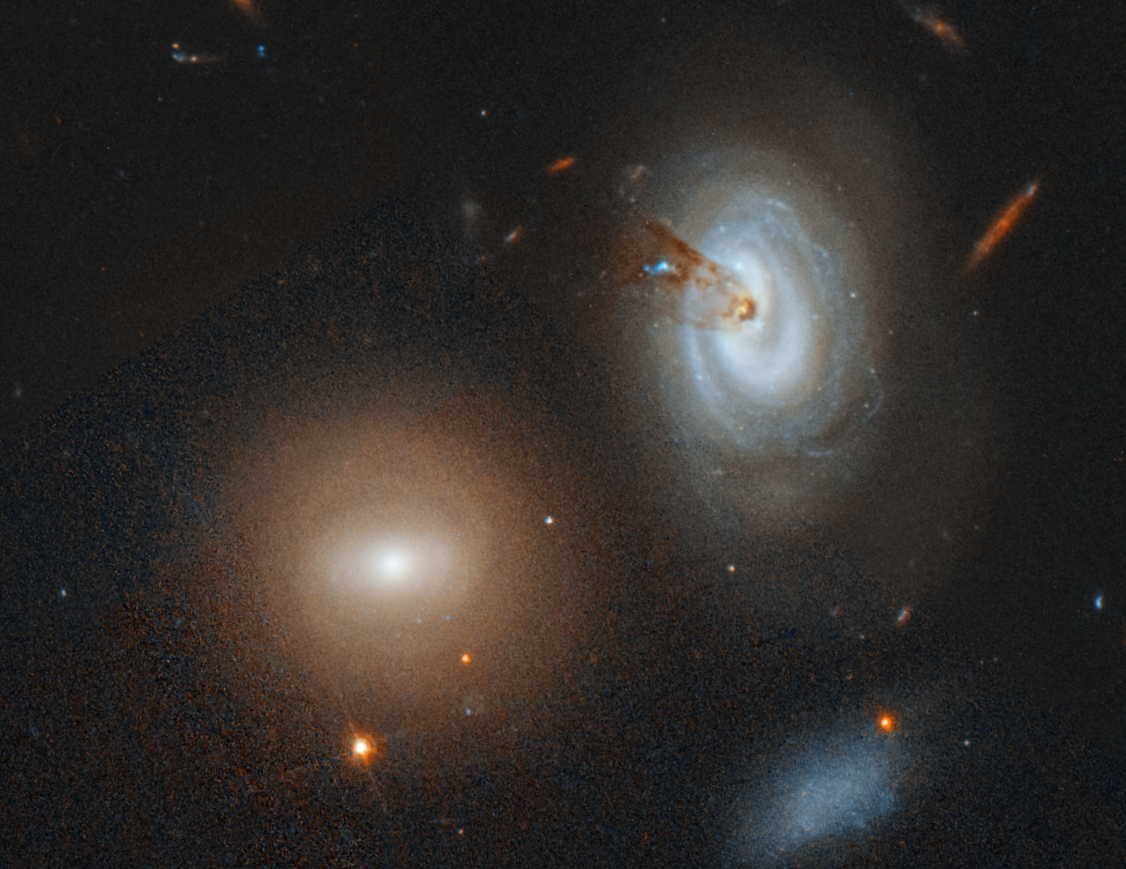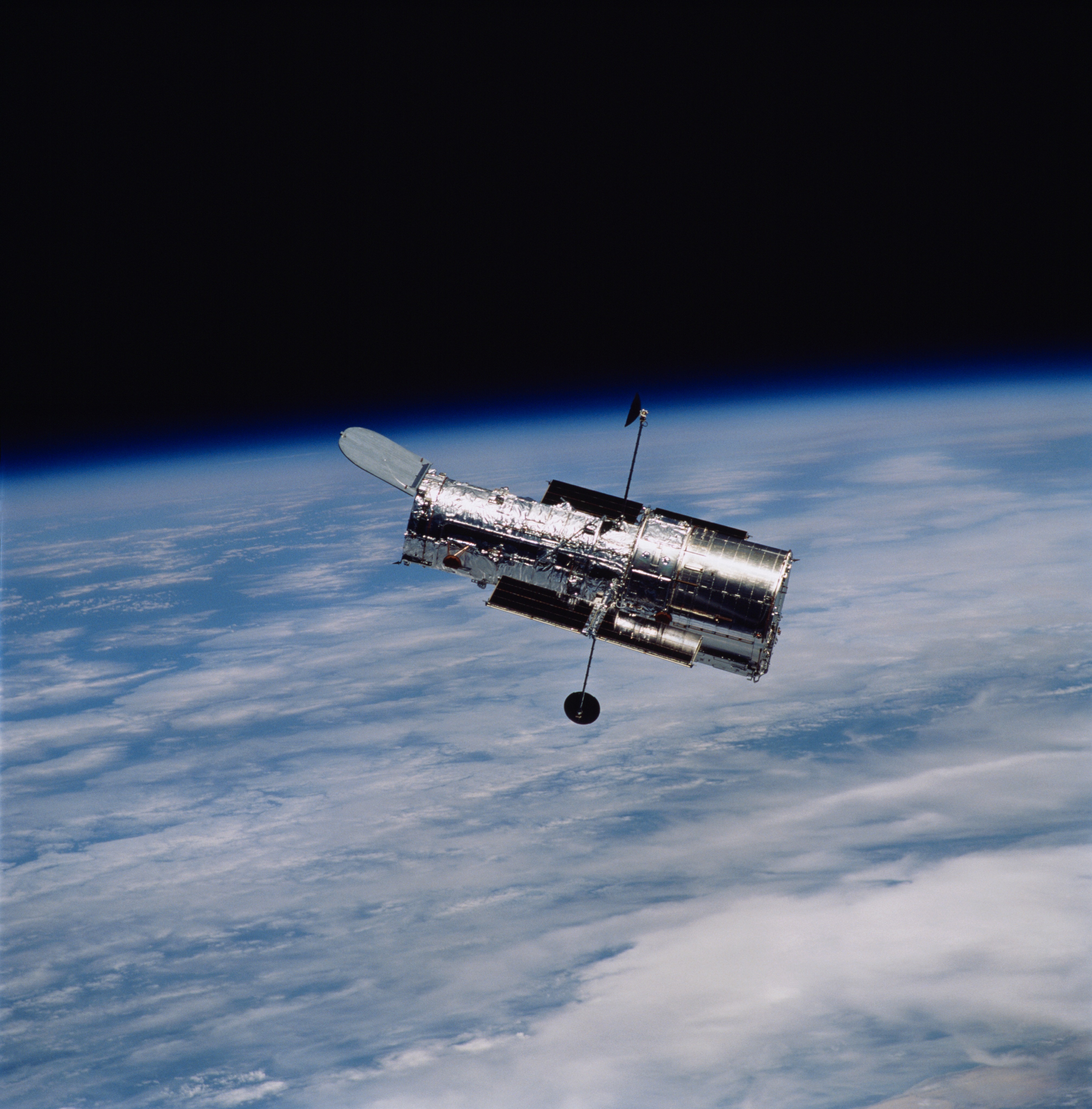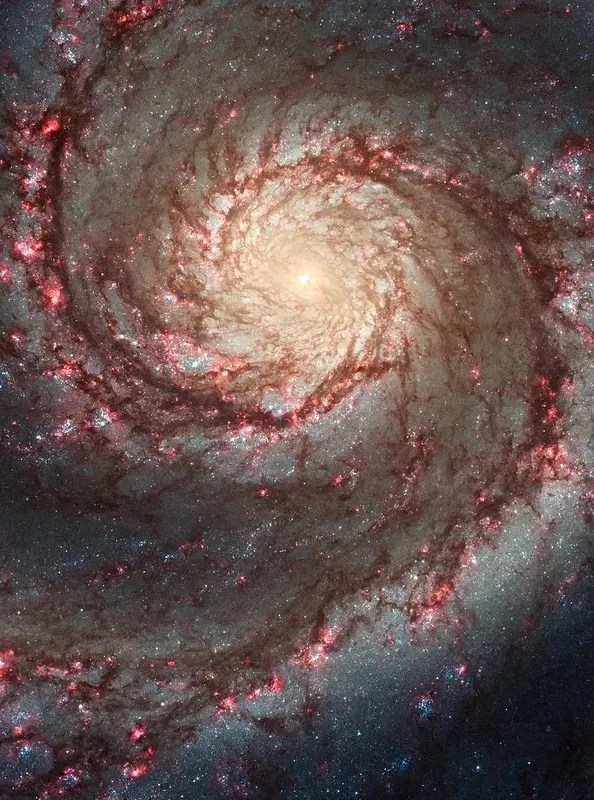5 min read
The rough-and-tumble environment near the center of the massive Coma galaxy cluster is no match for a wayward spiral galaxy. New images from NASA's Hubble Space Telescope show a spiral galaxy being stripped of its gas as it plunges toward the cluster’s center. A long, thin streamer of gas and dust stretches like taffy from the galaxy's core and on into space. Eventually, the galaxy, named D100, will lose all of its gas and become a dead relic, deprived of the material to create new stars and shining only by the feeble glow of old, red stars.
"This galaxy stands out as a particularly extreme example of processes common in massive clusters, where a galaxy goes from being a healthy spiral full of star formation to a 'red and dead galaxy,'" said William Cramer of Yale University in New Haven, Connecticut, leader of the team using the Hubble observations. "The spiral arms disappear, and the galaxy is left with no gas and only old stars. This phenomenon has been known about for several decades, but Hubble provides the best imagery of galaxies undergoing this process."

Called "ram pressure stripping," the process occurs when a galaxy, due to the pull of gravity, falls toward the dense center of a massive cluster of thousands of galaxies, which swarm around like a hive of bees. During its plunge, the galaxy plows through intergalactic material, like a boat moving through water. The material pushes gas and dust from the galaxy. Once the galaxy loses all of its hydrogen gas — fuel for starbirth — it meets an untimely death because it can no longer create new stars. The gas-stripping process in D100 began roughly 300 million years ago.
In the massive Coma Cluster this violent gas-loss process occurs in many galaxies. But D100 is unique in several ways. Its long, thin tail is its most unusual feature. The tail, a mixture of dust and hydrogen gas, extends nearly 200,000 light-years, about the width of two Milky Way galaxies. But the pencil-like structure is comparatively narrow, only 7,000 light-years wide.

"The tail is remarkably well-defined, straight and smooth, and has clear edges," explained team member Jeffrey Kenney, also of Yale University. "This is a surprise because a tail like this is not seen in most computer simulations. Most galaxies undergoing this process are more of a mess. The clean edges and filamentary structures of the tail suggest that magnetic fields play a prominent role in shaping it. Computer simulations show that magnetic fields form filaments in the tail's gas. With no magnetic fields, the tail is more clumpy than filamentary."
The researchers' main goal was to study star formation along the tail. Hubble's sharp vision uncovered the blue glow of clumps of young stars. The brightest clump in the middle of the tail contains at least 200,000 stars, triggered by the ongoing gas loss from the galaxy. However, based on the amount of glowing hydrogen gas contained in the tail, the team had expected Hubble to uncover three times more stars than it detected.
The Subaru Telescope in Hawaii observed the glowing tail in 2007 during a survey of the Coma Cluster's galaxies. But the astronomers needed Hubble observations to confirm that the hot hydrogen gas contained in the tail was a signature of star formation.
"Without the depth and resolution of Hubble, it's hard to say if the glowing hydrogen-gas emission is coming from stars in the tail or if it's just from the gas being heated," Cramer said. "These Hubble visible-light observations are the first and best follow-up of the Subaru survey."
The Hubble data show that the gas-stripping process began on the outskirts of the galaxy and is moving in towards the center, which is typical in this type of mass loss. Based on the Hubble images, the gas has been cleared out all the way down to the central 6,400 light-years.
Within that central region, there is still a lot of gas, as seen in a burst of star formation. "This region is the only place in the galaxy where gas exists and star formation is taking place," Cramer said. "But now that gas is being stripped out of the center, forming the long tail."
Adding to this compelling narrative is another galaxy, appearing to the lower left of D100 in the image, that foreshadows D100's fate. The object, named D99, began as a spiral galaxy similar in mass to D100. It underwent the same violent gas-loss process as D100 is now undergoing, and is now a dead relic. All of the gas was siphoned from D99 between 500 million and 1 billion years ago. Its spiral structure has mostly faded away, and its stellar inhabitants consist of old, red stars. "D100 will look like D99 in a few hundred million years," Kenney said.
The Coma Cluster is located 330 million light-years from Earth.
The team's results appear online in the January 8, 2019, issue of The Astrophysical Journal.
The Hubble Space Telescope is a project of international cooperation between NASA and ESA (European Space Agency). NASA's Goddard Space Flight Center in Greenbelt, Maryland, manages the telescope. The Space Telescope Science Institute (STScI) in Baltimore, Maryland, conducts Hubble science operations. STScI is operated for NASA by the Association of Universities for Research in Astronomy in Washington, D.C.
Contacts:
Donna Weaver / Ray Villard
Space Telescope Science Institute, Baltimore, Maryland
410-338-4493 / 410-338-4514
dweaver@stsci.edu / villard@stsci.edu
William Cramer
Yale University, New Haven, Connecticut
william.cramer@yale.edu
Jeffrey Kenney
Yale University, New Haven, Connecticut
203-432-3013
jeff.kenney@yale.edu




